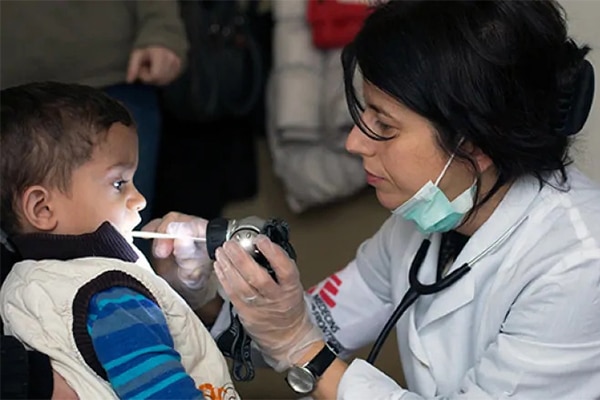Healthcare Limitations Hispanics and African-Americans Face & How To Address Them
By Dulce Alonso
The United States has for years faced considerable quantitative and qualitative disparities in healthcare access based on factors such as income, geographic location, neighborhood composition, and ethnicity. According to the American Medical Association, the macro segments which have the worst levels of access to quality healthcare are rural and low-income citizens of all ethnic backgrounds, and Hispanics and African-Americans generally, in particular, those who reside in geographic areas comprised by minorities.
As part of our cross-cultural marketing research practice, we recently analyzed data from several omnibus surveys conducted over the past year by our firm in order to better grasp differences in how consumers of different ethnicity (specifically, White/Caucasians, Hispanic/Latino, African-American/Black, Asian-American, and Pacific Islander) perceive their own ability to access healthcare. We have combined this with other data focused on identifying gaps in the healthcare landscape in order to share insights that can help stakeholders positively bridge the gap among the most disadvantaged consumers, which happen to be those of Hispanic and African-American backgrounds.
It All Starts With Lack of Dependable Coverage
Discrepancies in insurance coverage contribute to imbalances in the use of regular and preventative care across different types of consumers. The Kaiser Family Foundation (KFF) reports that nonelderly Latino Americans are more than 2.5 times as likely to be uninsured as White Americans, and Black individuals are nearly 1.7 times more likely to be uninsured.
This ultimately translates into less care. A KFF analysis indicated that 25 percent of Latino adults reported having no usual source of care and no healthcare visit in the past 12 months compared with 15 percent of White adults. And while about 59% of Caucasians said they visited a primary-care provider in the past ear, just 42% of Hispanic consumers and 52% of Blacks said they had visited a PCP (primary-care provider) in the past year. Typically, those who do not obtain regular healthcare checkups (due to lack of coverage or for behavioral reasons) end up with deteriorating health and use emergency room services more.
While 24 % of Caucasian survey respondents indicated they had to delay medical care because it was too expensive for them, almost double did so among the minorities (47% of Latino and 52 % of African-Americans) we have analyzed more closely. This survey question did not encompass medication costs (prescription, over-the-counter, or behind-the-counter), which likely also have similar disparities leading to skipped doses or outright abstention.
Hispanics and African-Americans Receive Poorer Quality Healthcare
Maternal health is one of the most high-volume care specialties, and African-American women are 2.8 times more likely to die from a pregnancy or a childbirth-related issue than White/Caucasian women. To cite another common area of care, the results of care from patients with moderate levels of diabetes, such as glycemic control, come out lower for African-American patients than for their Caucasian peers.
Beyond this data provided by public and private institutions, our survey results show that both Hispanic and African-American consumers believe their ethnicity affects how they are treated when seeking healthcare. One Hispanic respondent provided an open-ended comment to the effect of: “Being Mexican leads certain doctors to assume certain things about the way I live, if not outright make derogatory remarks.” Another African-American respondent stated the following: “You already walk in the door as a 2nd tier citizen if you are Black”.
Whether or not these perceptions equate to reality, they still have a behavioral impact on healthcare outcomes. While Caucasian respondents were most likely to say that they preferred to call the doctor’s office if they weren’t feeling well, African-American and Hispanic respondents were instead more likely than White respondents to research online and speak to friends and family members.
Lack of Specialty Care in Predominantly Minority Neighborhoods
A 2007 study found that Black Americans and other minorities in urban settings were substantially more likely to report a trip for medical or dental care lasting more than 30 minutes compared with their White counterparts. When controlling for the mode of transportation, community, and personal characteristics, Black Americans were still more likely than White Americans to face a longer travel time for medical or dental care.
To the same effect, 77% of Hispanic and 75% of African-American respondents in one of our omnibus surveys indicated that access to healthcare facilities has an impact on the healthcare they receive, while only 69% percent of White respondents said had the same.
One known factor is the lack of specialty medical care (such as oncology, cardiac, ophthalmology, and dialysis, among others) in lower-income neighborhoods which are disproportionately populated by Black and Hispanic patients. To compound this, Latinos and African-Americans have lower rates of vehicle ownership and paid time off from work to attend daytime medical appointments, given the higher rates of employment in the service industry and construction jobs.
Low Income and Marginalized Neighborhoods
Aside from healthcare-related reasons, there are also indirect causes not associated with the healthcare system which contribute to worse health outcomes for most minorities. Higher rates of poverty and low income among African-Americans and Hispanics are the most overarching factor, which among other things leads to an inferior education in terms of health and nutrition. And when speaking about the types of diets, the US ranks way behind other developed countries as far as the affordability of fruit, vegetables, and non-processed foods, which to make matters worse are significantly harder to find at stores in predominantly Hispanic and African-American neighborhoods. Lower income is also the leading reason for lack of insurance coverage, which the KFF market research data showed was more than double for Blacks and Latinos.
Last but not least, medical debt rates are also highly correlated to lower income levels, and in effect, Hispanics and African-Americans are 1.6 times as likely to have over a thousand dollars in medical debt. This inevitably leads those in significant debt to need or want to stay away from subsequent medical care.
How To Bridge The Divide
Here are several potential steps that, based on secondary research of best practices, could help improve the quality and amount of healthcare that Hispanic and African-American consumers collectively obtain:
-Make sure that data obtained from both surveys and medical statistics are representative of all segments, both by better data distribution and improved access to lower literacy and foreign-speaking patients.
-Increase the use of customer experience surveys generally and increase the use of quality control metrics for issues largely faced by minorities. This can help aptly redesign patient journeys.
-Ensure that medical personnel is trained on cultural nuances and on preventing biases.
-Better align Hispanic and African-American communities with staff that represents those origins. To that end, healthcare organizations can develop minority-oriented scholarships and educational training programs.
-Partner to offer virtual healthcare hubs at or near community organizations in predominantly Hispanic and African-American neighborhoods.
-Given lesser flexibility for paid time off among these minorities, expand service hours to evenings and weekends where feasible.
-Have greater diversity in leadership positions and corporate governance of healthcare organizations.
-Insurers offering corporate plans could encourage employers to offer tiered premiums based on income, which would help low-income minority employees still be able to afford coverage.
-Insurers and/or major healthcare providers could also develop cost calculator apps or portals, which would give low-income minority patients greater certainty about whether and where they can afford care.
Not all of these measures can fit with the current circumstances of each organization, and there are clearly many other potential alternatives for assisting in making healthcare access less lopsided by population groups. Regardless of the path chosen, a mission-driven, tenacious and patient effort in this regard will make significant impact on tens of millions of people across the country.









